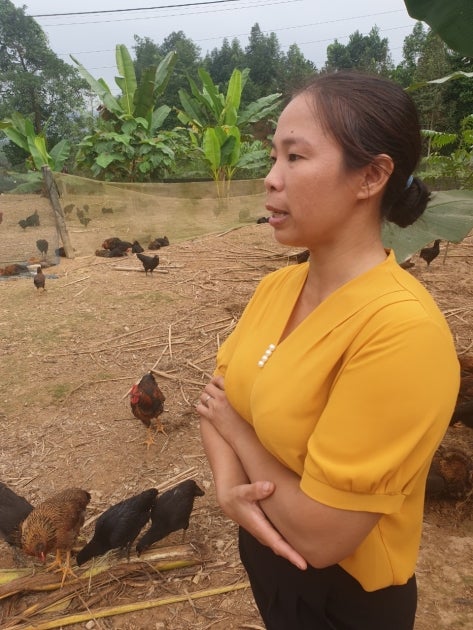Solar power charges pandemic recovery for indigenous farmers in Viet Nam
Date:

Overcoming adversity has long been the stock in trade of Do Thi Phuong, a 42-year-old mother of two living in a small village in Viet Nam’s lush Lao Cai province. As the primary breadwinner in her family of six, Phuong is accustomed to being a rock for her family in hard times. Years ago, landslides wiped out all but four out of 42 household rice fields in the village, yet Phuong managed to provide.
But COVID-19 has tested her resolve like nothing else.
Phuong’s village has traditionally been home to indigenous groups that farm the land. Many in the community raise chicken and pigs - each household maintains between 1,000-5,000 chickens, from which they derive their primary income.
Over the last few years, livestock production, particularly poultry, has been one of the fastest-growing sectors in agriculture in Viet Nam. And though it accounts for the country’s second-largest share of meat production, 89.6% of poultry production1 is led by smallholder farmers, who are far more vulnerable to climate change, natural disasters and unexpected shocks – like a pandemic.
Viet Nam has recorded just over 1,000 cases of COVID-19, but the economic repercussions of prolonged lockdowns have had a profound impact on rural markets.
Phuong paints a bleak picture: “The village roads that were usually busy with many traders coming to buy chickens, fish and cinnamon products, were empty,” she says.
For her family, this meant an income loss of 60-70%.
Before the pandemic, Phuong’s household would raise a batch of around 3,000 chickens, and at the time of sale, traders would shell out VND65,000 (about US$2.8) per kilogram. Raising three batches a year would net the family about US$6500.
When the crisis hit, travel restrictions and social distancing rules made it challenging for Phuong to sell her chickens. Chicken prices crashed. Phuong returned home every night with barely VND500,000-60,0000 (US$21-26), just enough to cover feed costs for the birds.
Her family’s electricity costs also doubled, with unsold chickens continuing to require food and electricity and the children spending most of their time at home. Their meagre income was stretched to its limits, even after cutting expenses and taking out a loan.

Empowering farmers
The turnaround came via a powerful patron: solar energy. Through UNEP’s EmPower project, Phuong is procuring solar-powered chicken incubation and ventilation equipment. The monthly electricity cost for heating, ventilation and lighting for chicken rearing will be almost zero with the solar system. EmPower and its partner CHIASE are helping Phuong to develop her business plan and to select and procure the most suitable equipment. Phuong is also receiving support to access a loan from provincial Vietnam’s Women’s Union.
It is not only Phuong who has benefitted. The green chicken coops are scalable, bringing in quick cash flows and helping struggling communities bounce back from the economic crisis. EmPower is supporting around 300 women farmers across Viet Nam to harness the benefits of renewable energy and establish new business models for livestock rearing, agro and herbal product processing, and noodles, fish, and fruit drying.
Benefits for indigenous populations
Indigenous women especially are benefitting. While often the primary breadwinners in their households, their voices often remain unheard where policy decisions are being made.
“By giving indigenous women a stake in renewable energy development, EmPower is helping to ensure that their voices are being heard,” says Annette Wallgren, Programme Officer for Gender and Climate Change at UNEP’s Office for Asia and the Pacific.
“Renewable energy livelihoods and enterprises at the local level will be critical to helping communities bounce back from this pandemic. We must also be aware of the needs and solutions that indigenous women can bring to the renewable energy sector, as custodians of the land and change-makers in their communities.”
Some positive progress has been seen on that front. Viet Nam’s updated Nationally Determined Contributions (NDCs) to the Paris Agreement included a section on gender equality and prioritizing the mitigation of risks for vulnerable communities.
For Phuong, the new technology is a sign of hope. “I hope that I can use solar energy to save on the cost of chicken production and I hope it will help my family to recover from COVID-19,” she says.
_________________
1 http://documents1.worldbank.org/curated/en/203891516788731381/pdf/122935-WP-P153343-PUBLIC-Vietnam-livestock-ENG.pdf